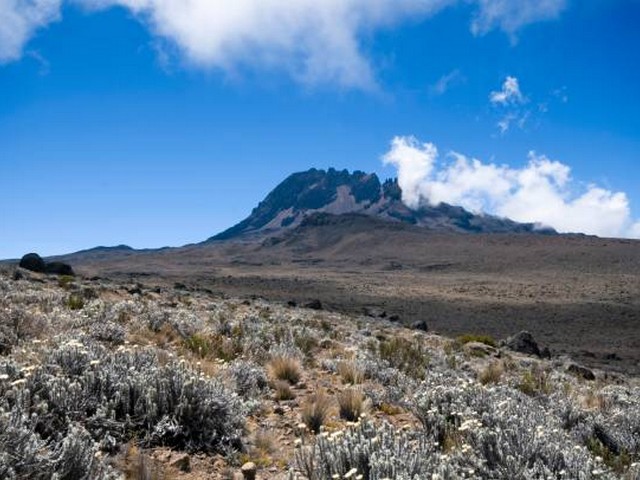Best Time of Year for Photography on Kilimanjaro
Capturing the Majestic Beauty of Africa’s Highest Peak
Mount Kilimanjaro is not just a mountain; it is a monumental canvas where nature exhibits its ultimate artistry. The allure of capturing this grandeur through the lens is irresistible for photographers, from seasoned professionals to enthusiastic novices. At Kilimanjaro Centre for Trekking and Ecotourism (KCTE), we understand that the quest for the perfect shot is not only about skill but also about timing. This blog post explores the best time of year for photography on Kilimanjaro, ensuring your visit is filled with breathtaking landscapes and vibrant wildlife shots that will echo through your memories forever.
Understanding Kilimanjaro’s Photogenic Seasons
1. The Dry Seasons: Clarity and Accessibility
June to October: A Crisp Vista Unveiled
This period marks the long dry season on Kilimanjaro. The skies are often clear and the visibility is impeccable, offering photographers crystal-clear mornings and evenings perfect for capturing the snow-capped summit and the vast savannah below. The dry weather also means easier trekking conditions, allowing you to carry your photography equipment more comfortably.
December to February: The Short Dry Spell
Following the short rains, this season provides a fresh burst of clear, sunny skies mixed with occasional brief showers that can add a dramatic effect to your photographs. The landscape is rejuvenated, with lush vegetation and clear air, and the mountain is less crowded, offering a more solitary experience with nature.
2. The Wet Seasons: A Bounty of Drama and Color
November and March to May: The Rainy Canvas
While many might shy away from the mountain during the wet seasons, photographers searching for the most dramatic and moody images will find it a paradise. The rains bring forth a life force that blankets the mountain in rich greens, and the clouds and fog often create mystical scenes that are perfect for unique, evocative photography.
What Each Altitude Offers to Photographers
The Lower Slopes: Rich Biodiversity
Starting your trek through the rainforest zone, the lower slopes of Kilimanjaro offer lush landscapes and are teeming with wildlife. Monkeys, birds, and an array of insects provide excellent subjects for macro and wildlife photography. The dense canopy also plays with light and shadows, creating fantastic opportunities for those looking to capture the ethereal beauty of Kilimanjaro’s forests.
Mid-Altitudes: Moorlands and The Giant Senecios
As you ascend, the landscape transforms into alpine moorland, characterized by large senecios and lobelias. The bizarre, otherworldly appearance of these plants against the backdrop of rolling hills and valleys provides a surreal landscape for powerful compositions.
The Summit Approach: A Lunar Landscape
Approaching the summit, the scenery shifts again to a more barren, lunar-like terrain. The lack of vegetation highlights the stark, raw beauty of Kilimanjaro. The play of light during sunrise and sunset paints the glaciers and rocks in hues of orange, pink, and gold, a spectacle that every photographer dreams of capturing.
Tips for Timing Your Shots
- Golden Hours: Both sunrise and sunset provide magical lighting that enhances textures and depth in your photographs. The golden hours on Kilimanjaro are truly golden, casting a sublime glow over the horizon.
- Night Skies: For astrophotography enthusiasts, the dry seasons offer clearer skies. Capturing the Milky Way as it stretches over the summit of Kilimanjaro can be a highlight of your photographic expedition.
- Weather Patterns: Being prepared for sudden weather changes is crucial. Capturing storms rolling in or the play of light through the clouds can yield impressive results.
Why Choose KCTE for Your Kilimanjaro Photography Adventure?
At Kilimanjaro Centre for Trekking and Ecotourism, we don’t just guide you up the mountain; we ensure you capture its essence. Our tailored photography tours are designed by professionals who understand both the terrain and the art of photography. With KCTE, you gain access to:
- Expert guides with an understanding of optimal times and spots for photography.
- Assistance with carrying and protecting your photography gear.
- Insights into the mountain’s ecology and optimal shooting conditions.
Frequently Asked Questions
What type of photography gear is recommended for Kilimanjaro?
A durable, weather-resistant camera, a variety of lenses (wide-angle and zoom), spare batteries, and protective gear for your equipment are essential. A lightweight tripod can be very handy for long-exposure shots.
Can beginners in photography join the KCTE tours?
Absolutely! Our tours cater to all skill levels, and our guides are equipped to help you learn along the way.
Are there any specific photography workshops offered by KCTE?
Yes, we offer specialized photography workshops that focus on landscape, wildlife, and cultural photography on Kilimanjaro.
Capture the Crown Jewel of Tanzania with KCTE
Choosing the best time of year for photography on Kilimanjaro significantly enhances the quality of your photos. Whether you seek the crisp, clear landscapes of the dry season or the lush, dramatic vistas of the wet season, timing is everything. Join us at Kilimanjaro Centre for Trekking and Ecotourism to immortalize the awe-inspiring beauty of Kilimanjaro. Book your photographic journey today and bring home more than just memories; bring back a piece of Kilimanjaro’s soul!




